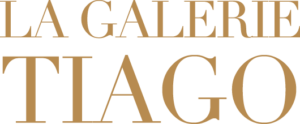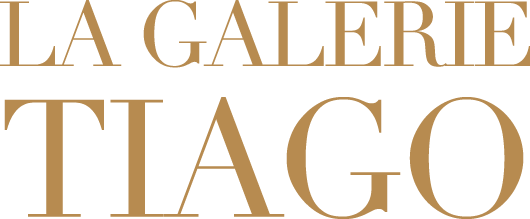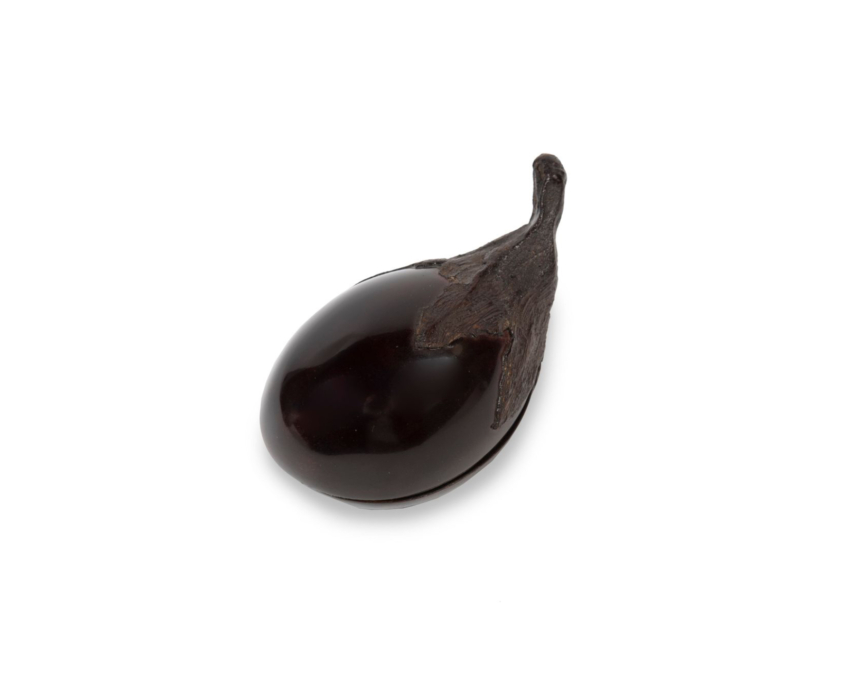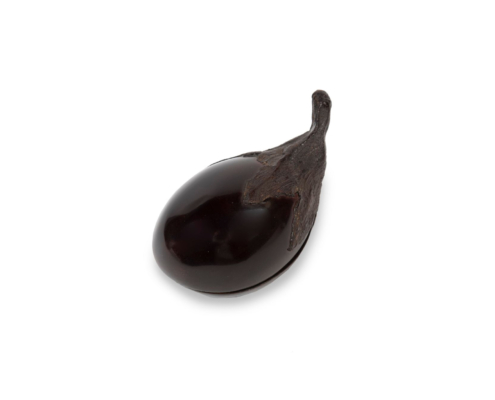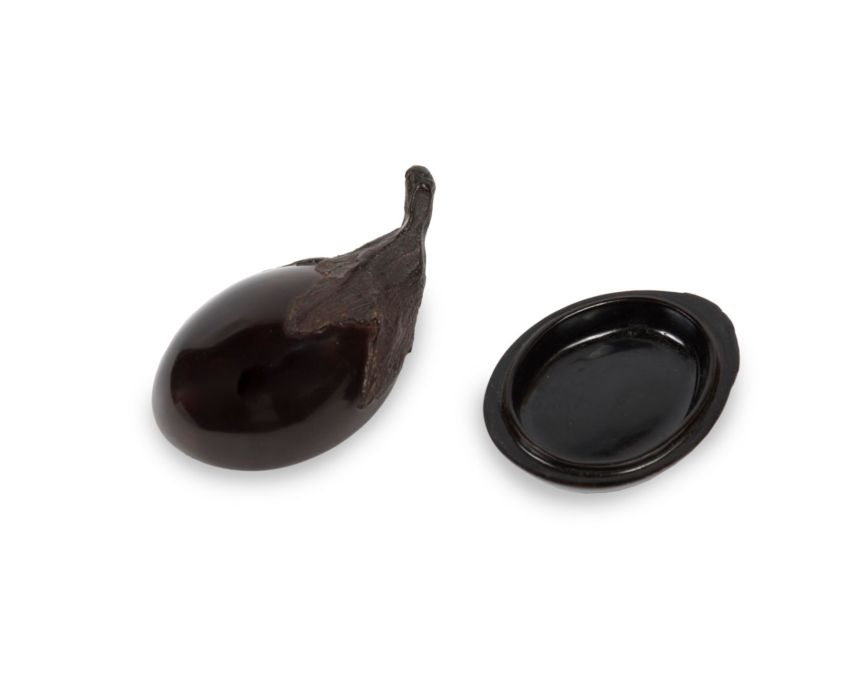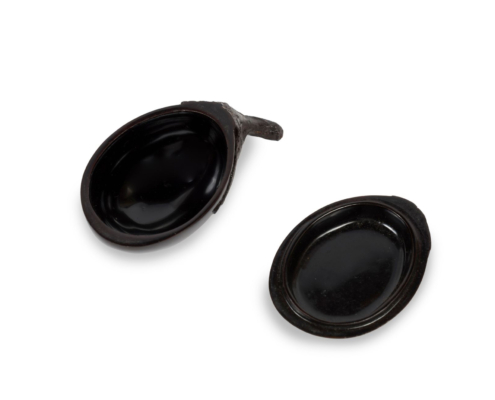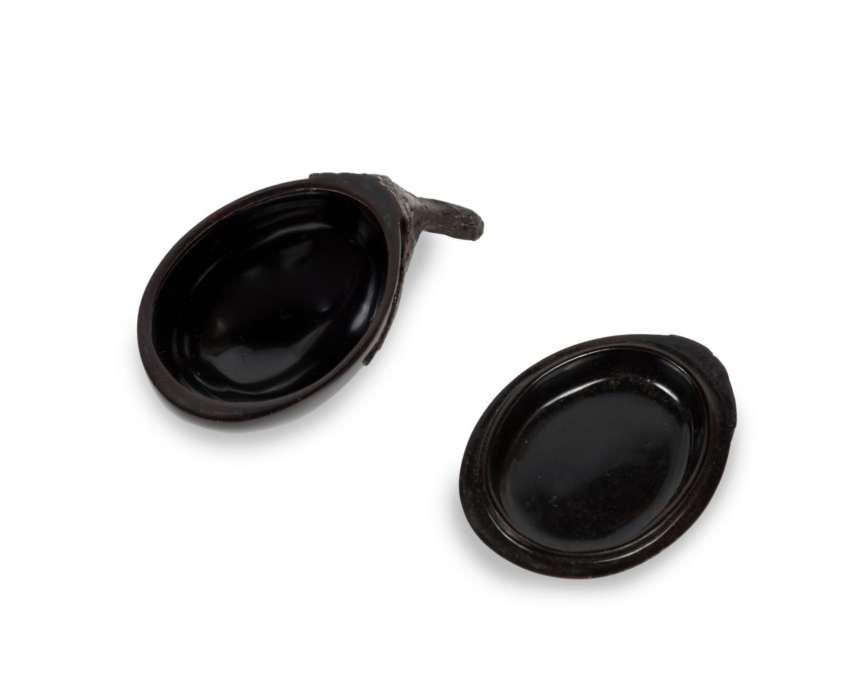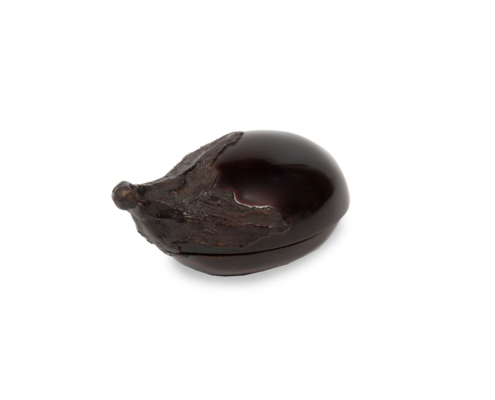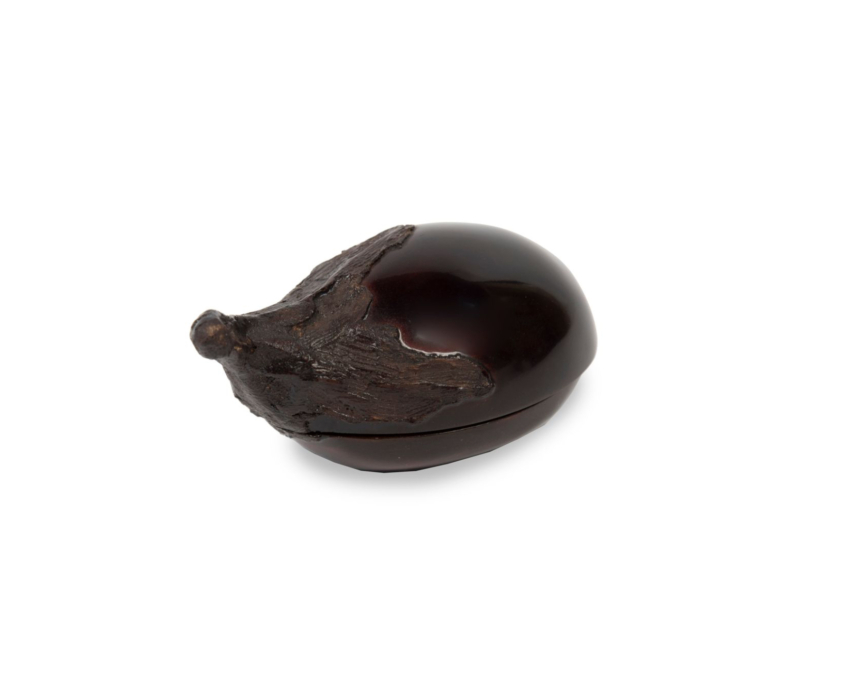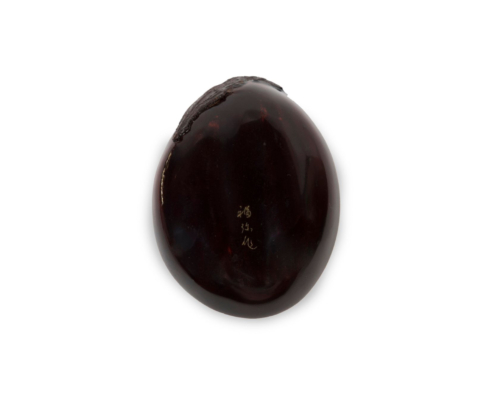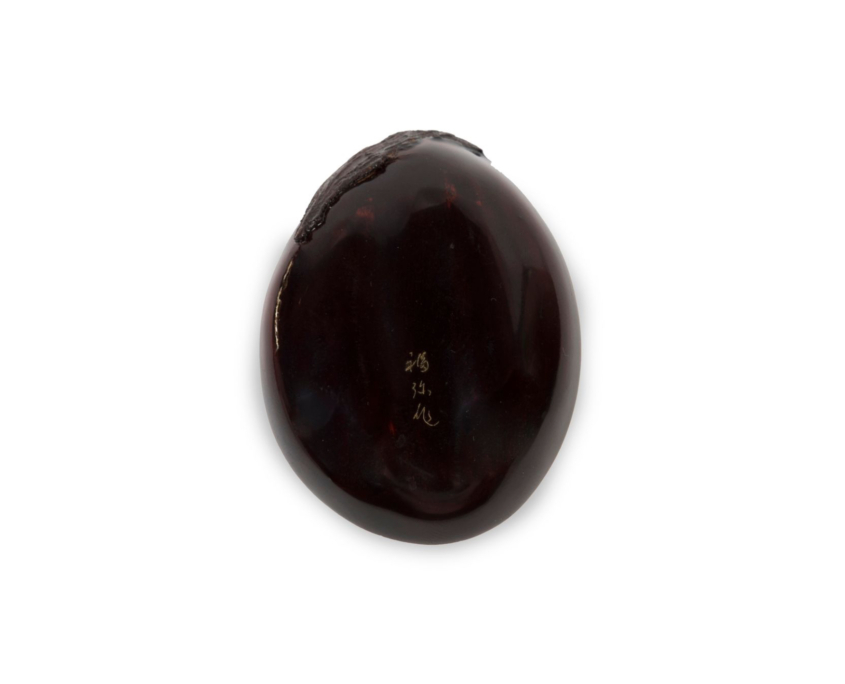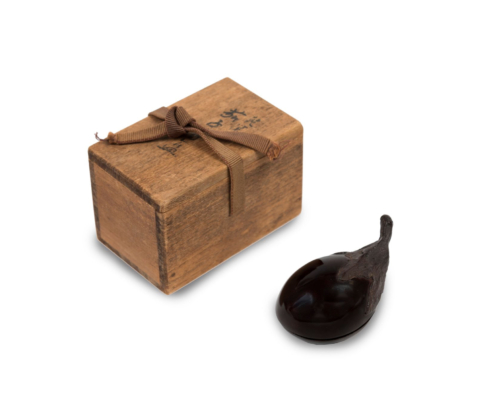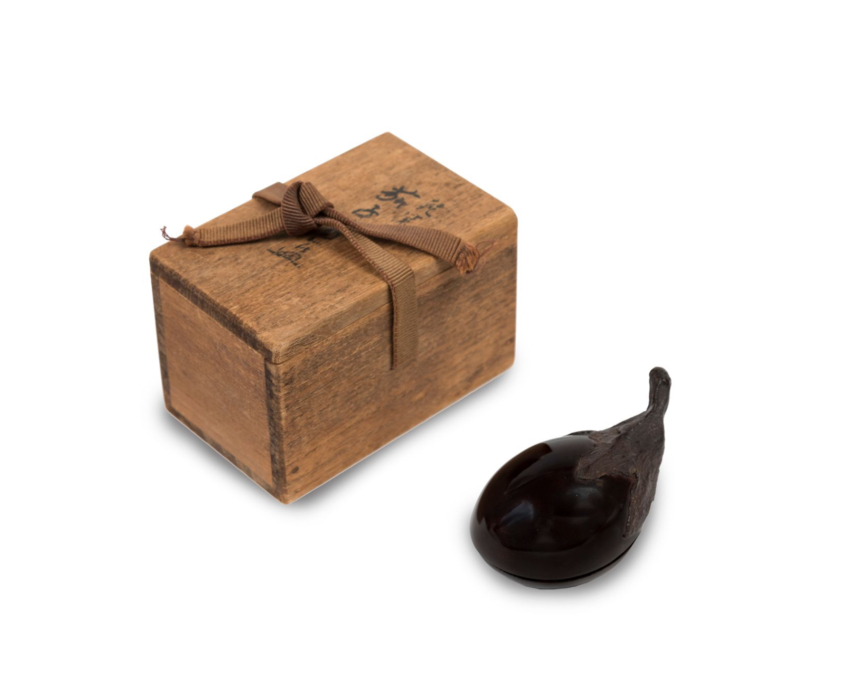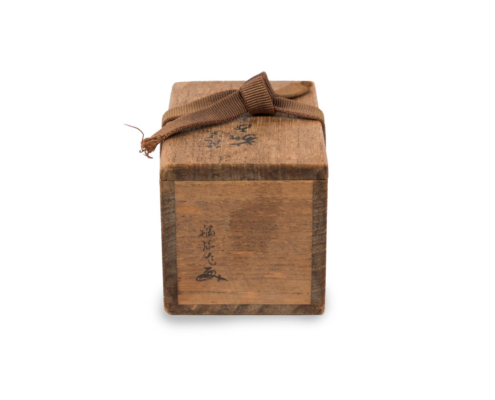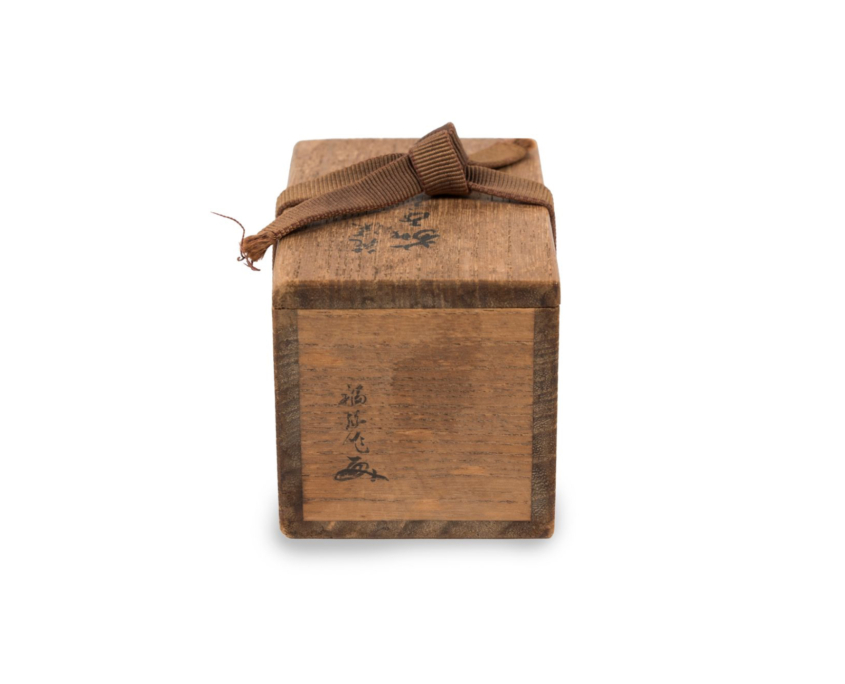SMALL KOGO LACQUERED BOX IN THE SHAPE OF AN EGGPLANT – SHOWA
Reference: 2019-722
Small lacquered box in the shape of an eggplant.
A kōgō is an incense box used in Japan as part of the tea ceremony. In enamelled terra cotta,
lacquered wood or white porcelain, they are often in shape of animals, plants, or humans
figures.
The eggplant has a special symbol in Japan, especially in the Hatsuyume (first dream of the
new year). Traditionally, this dream must predict the dreamer’s luck in the following year.
Since the Edo period, it has been a popular belief that a dream consisting of Mount Fuji, a falcon and an eggplant is a very good omen. A Japanese formula sums up the principle of Hastuyume
: Ichi-Fuji, Ni-Taka, San-Nasubi “1. Fuji, 2. Falcon, 3. Eggplant”).
This first dream is widely spread during Edo period, however the origin of this tradition
remains unknown. Several hypotheses exist. According to a version attributed to Tokugawa
Ieyasu, this formula comes from the ancient province of Suruga: it would be about the three
highest things in the province: Mount Fuji, Mount Ashitaka (ending with “taka” which means
falcon) and the very high price of the first eggplants.
Other hypotheses put forward the symbolic significance of the three elements: the sacred
character of Mount Fuji, the strength and intelligence of the falcon, the homonymy of the word
aubergine and the verb “to accomplish”.
It is also possible that this formula comes from the city of Komagone, home to the Komagome
Fuji-jinja Temple, from where it was possible to observe Mount Fuji. The remains of a
falconer’s house established by Shogun Yoshimune Tokugawa (1684-1751) were also revealed by
excavations carried out in the 1970s. Finally, Komagome was a land of eggplant production during the Edo period.
Japan – Showa (1926-1989)
Height: 1.3 inch – Length: 3.15 inch – Width: 1.8 inch
